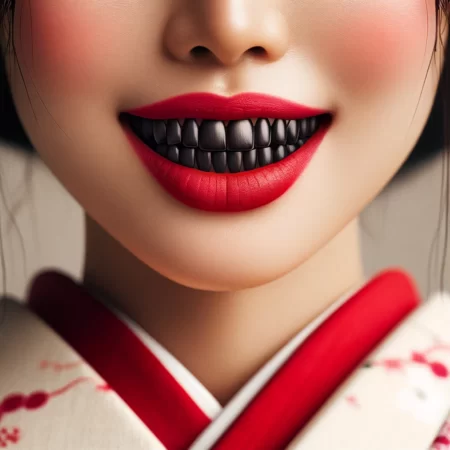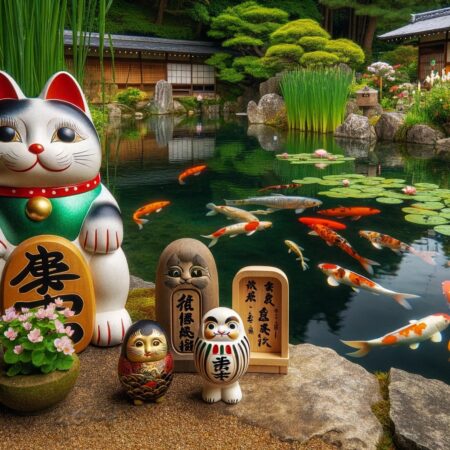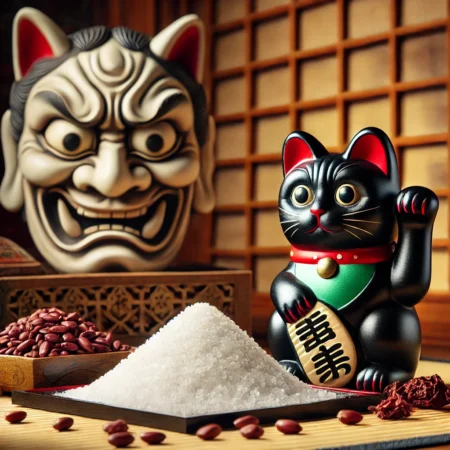When walking through the city at night, you might hear the cry of crows echoing through the streets. Their presence can evoke a sense of eeriness, yet also possess a certain mysterious charm. In Japan, there are numerous superstitions about crows, some of which carry positive connotations while others are negative. In this discussion, let’s explore both sides of the superstitions related to crows.
Why Crows Are Considered an Omen of Bad Luck
First, let’s examine the superstitions that consider crows as symbols of bad luck. Some of these might be familiar to you.
The Superstition “When Crows Cry, Someone Dies”

This is a superstition that everyone has heard at least once, but what is the background behind it? The superstition “when crows cry, someone dies” has its roots in Japan’s old funeral customs. In ancient Japan, burial was more common than cremation. To ensure that the deceased would not become hungry underground, it was customary to offer food at the grave during the burial. However, the smell of this food attracted crows to the graveyard, where they would eat the offerings.
Crows, being highly intelligent, learned that they could find food at the graveyard. As a result, many crows gathered there, and their cries echoed throughout the area. This phenomenon gave people an ominous impression, leading to the superstition that “when crows cry, someone dies.”
This superstition stems from the sight of crows eating the food meant for the deceased and the perception of their cries as ominous. The gathering of crows at the graveyard made people feel the presence of death, spreading this superstition.
Negative Image of Crows
The negative image that everyone has of crows also contributes to the perception that they are ominous. This is understandable, as the crows we see in our daily lives are often pitch black and appear eerie. Additionally, crows are frequently seen scavenging garbage bags, which can make the town look unclean. Furthermore, crows can sometimes exhibit aggressive behavior, intimidating or attacking people. For these reasons, many people have a negative image of crows.
The Image of “Black = Bad” in Japan
In Japan, there is also a strong association of “black = bad.” This image did not exist until the Edo period but changed dramatically after the Meiji era due to the influence of Western civilization. Before the Meiji era, mourning clothes in Japan were typically white or natural fabric colors.
However, with the influence of Western culture in the Meiji era, mourning clothes gradually turned black. Along with this change, the negative image of black spread. Terms like “black company” and “blacklist” also exist today. The idea that “black = bad” can be said to have formed after the Meiji era.
Are Crows the Divine Messengers as Yatagarasu?

On the other hand, crows also have positive images. A representative example is Yatagarasu, a crow considered a divine messenger. Even if you don’t know the name, you might have seen Yatagarasu on the logo of the Japan national soccer team.
Yatagarasu is a special crow that serves as the symbol of the Japan Football Association. This crow is said to have guided Emperor Jimmu from Kumano to Yamato during his eastern expedition and is considered a messenger of the gods of Kumano. Ancient literature, such as the “Engishiki,” describes “the three-legged crow as the spirit of the sun and the white rabbit as the spirit of the moon,” depicting Yatagarasu as a spirit of the sun.
Yatagarasu has been revered as a bird with spiritual power residing in the sun, often depicted on ceremonial garments and festival tools of the imperial court, as well as on spears and targets in festivals across Japan, alongside the sun and the crow, and the moon and the rabbit. The “ata” in Yatagarasu is a unit of length similar to inches and feet, but like “yaoyorozu” (meaning “many”), “yata” signifies “large.”
Today, Yatagarasu is also worshipped as a god of guidance and traffic safety, especially at Mikata Hikosha Shrine, located on the left side of the worship hall. Thus, Yatagarasu is a special being deeply rooted in Japanese mythology and history, widely believed in for its spiritual power and guiding abilities.
Why Is the Logo of the Japan National Soccer Team Yatagarasu?

The relationship between Japanese soccer and Yatagarasu (the three-legged crow) originates from Nakamura Sakunosuke, who greatly contributed to the spread of soccer in Japan. Hailing from Wakayama Prefecture, Nakamura Sakunosuke established a football club while attending Tokyo Higher Normal School (now Tsukuba University), marking the beginning of soccer in Japan.
In honor of Nakamura’s achievements, the Japan Football Association sought a symbol associated with him. They turned to Kumano, Nakamura’s hometown in Wakayama. This area has legends about Yatagarasu, a three-legged crow revered as a guiding deity in mythology, known for its spiritual power and guidance. Additionally, the Kumano region has a long tradition of Kemari, a sport similar to soccer.
Given this background, the Japan Football Association decided to adopt Yatagarasu as their symbol. Yatagarasu is cherished as the emblem of Japanese soccer, representing its history, tradition, and future. Thus, Yatagarasu and Japanese soccer have a deep historical connection, widely recognized as a symbol of the sport in Japan.
Why Do Crows Have Both Positive and Negative Images?

Despite being revered as guiding deities in myths, particularly as Yatagarasu, why has a negative image become associated with crows? It is believed that this layered perception arose after the Meiji era. During that time, modernization was of utmost importance, leading to the Western notion of “black = bad” becoming entrenched. Additionally, the sacred image of Yatagarasu is not commonly encountered in daily life. Instead, many people recall the frequent sight of crows scavenging for garbage in the city, which contributes to the association of crows with negative connotations.
Perception of Crows Overseas

Not only in Japan, but crows have played significant roles in various cultures and myths around the world since ancient times. In China, it is believed that a crow resides in the sun and a rabbit in the moon, symbolizing the passage of time as “Wu Tu.” Additionally, there is a story that Nurhaci of the Qing dynasty was saved by a crow, leading to crows being respected as sacred animals.
Crows are also regarded as important outside of Asia. In Egypt, they are considered birds of the sun, and in England, due to the legend of King Arthur being transformed into a raven by magic, harming a raven is seen as an act of treason against the king and is believed to bring misfortune.
Crows appear in Greek mythology as well, where they were originally white with beautiful voices, serving as wise birds to the sun god Apollo. However, after confessing that Apollo’s wife was friendly with another man, they incurred Apollo’s wrath and were turned into their current black form. In Celtic mythology, goddesses often appear in the form of ravens, with one such goddess, Badb, being known as a raven deity.
Thus, crows are generally seen as animals serving the gods both in Japan and overseas.
Summary
How was it? In this discussion, we looked at both the negative and positive images associated with the superstition of crows. Originally considered sacred, it is believed that during the Meiji era, the Westernization process led to the preconception that “black = bad” taking root in our minds. Additionally, it is quite common for crows to be revered as deities overseas.
On this site, we also introduce various other interesting aspects of Japanese history and culture beyond superstitions. If you are interested, we would be delighted if you read our other articles as well!

















コメント